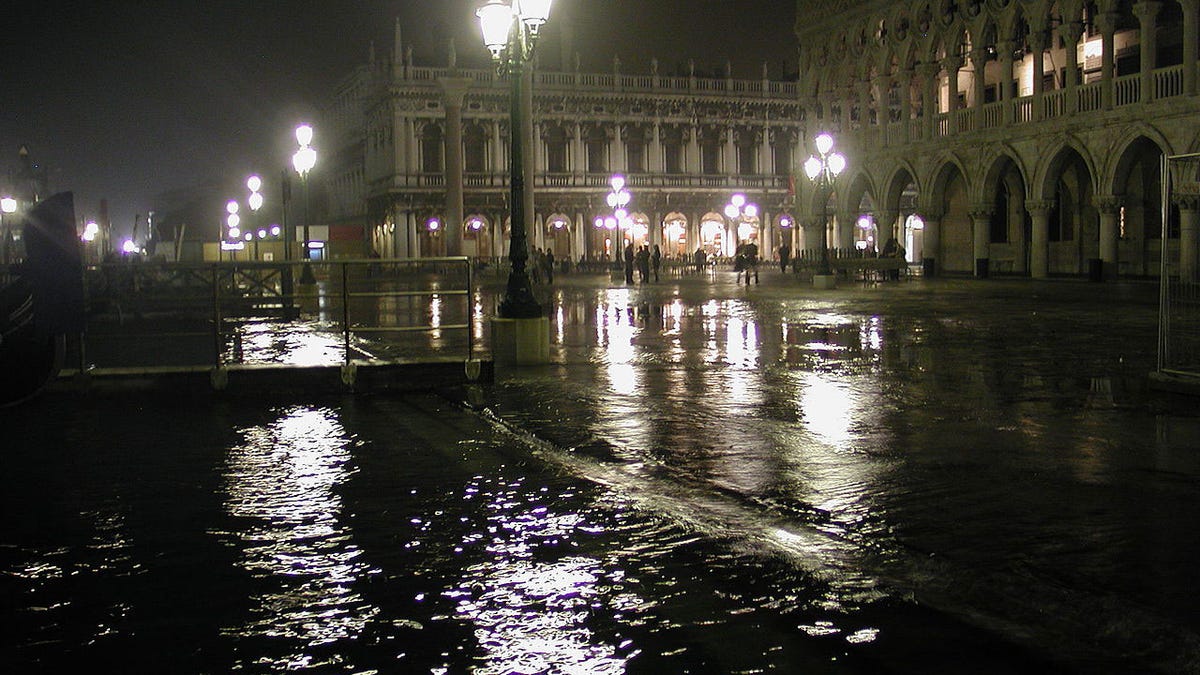Uh oh. Venice hasn't stopped sinking after all
Scientists find new evidence that contradicts earlier assumptions that the lagoon city was out of trouble.

Venice again faces a centuries-old danger: It is continuing to sink. And scientists now warn that the lagoon city is even slowly tilting slightly to the east.
The warning, carried in the March 28 issue of Geochemistry, Geophysics, Geosystems, a journal of the American Geophysical Union, contradicts earlier research that argued that the process of subsidence had stopped during the 2000s. This followed a decision by the city to stop pumping groundwater from beneath the city.
In the Venetian lagoon, which surrounds the city and protects Venice from the Adriatic Sea, sea levels have been rising at a rate of 2 millimeters annually. Projecting that increase over the next couple of decades, scientists say that Venice and the surrounding region may sink up to 80mm, or 3.2 inches.
"Venice appears to be continuing to subside, at a rate of about 2 millimeters a year," said Yehuda Bock, a researcher at the University of California at San Diego, in La Jolla, Calif., and the lead author of the article. "It's a small effect, but it's important."
One danger in particular: The change in relative sea levels makes the city more vulnerable to flooding, which has been increasing both in severity and frequency, according to the study. The most recent case of high flooding occurred on December 24, 2010, when more than half the city was submerged.
Through the decades, Venice has tried to put new technology to work to combat nature. For instance, the city has installed flexible mobile flap-gates which were added to the inlet canal beds to close the three lagoon inlets as a way to mitigate flooding. Floodgates are also now equipped to get raised whenever tides reach a height of 1.1 meters.
But that hasn't stopped the hands of time, and each year, water in the Venice canal gets higher. Using data compiled between 2000 and 2010, Bock and his team concluded that Venice was subsiding at an average rate of 1 to 2 millimeters a year (0.04 to 0.08 inches per year). And it's not just the historic city. Also affected are the 117 islands in Venice's lagoon. The northern parts of the lagoon are declining at a rate of 2 to 3 mm (0.08 to 0.12 inches) per year, while the southern region of the lagoon is subsiding at 3 to 4 mm (0.12 to 0.16 inches) each year.
And now the odd finding: The area is tilting roughly a millimeter or two eastward per year, producing a new reality where the western part of the affected region--now inhabited by the city of Venice--is higher than the eastern sections.
What earlier studies overlooked was the movement of tectonic plates in the Adriatic region, which has contributed to change in the sediment levels beneath Venice. Scientists now estimate that the natural barriers that protect the Venice lagoon and city might drop by 150 to 200 millimeters in the next 40 years.

